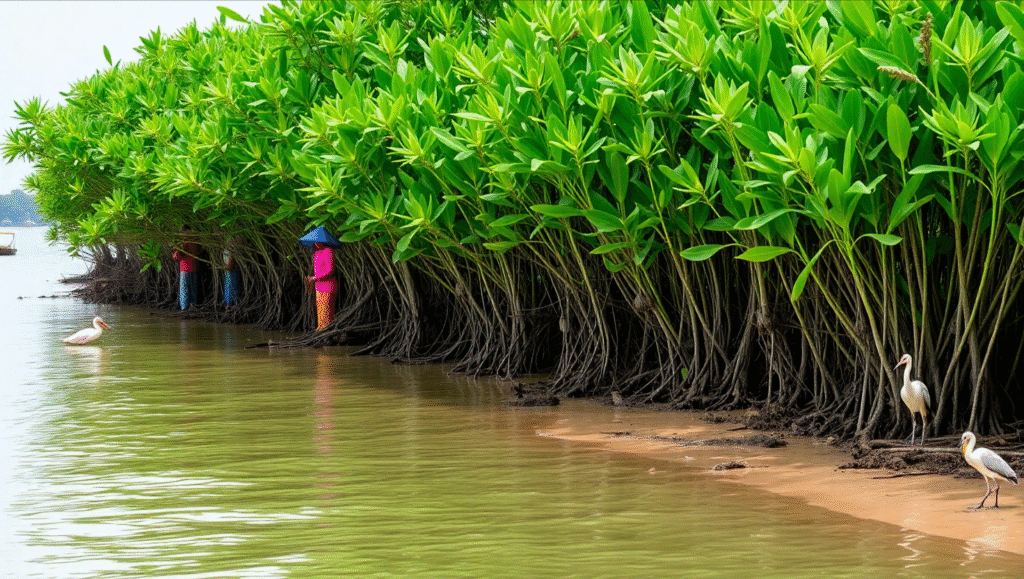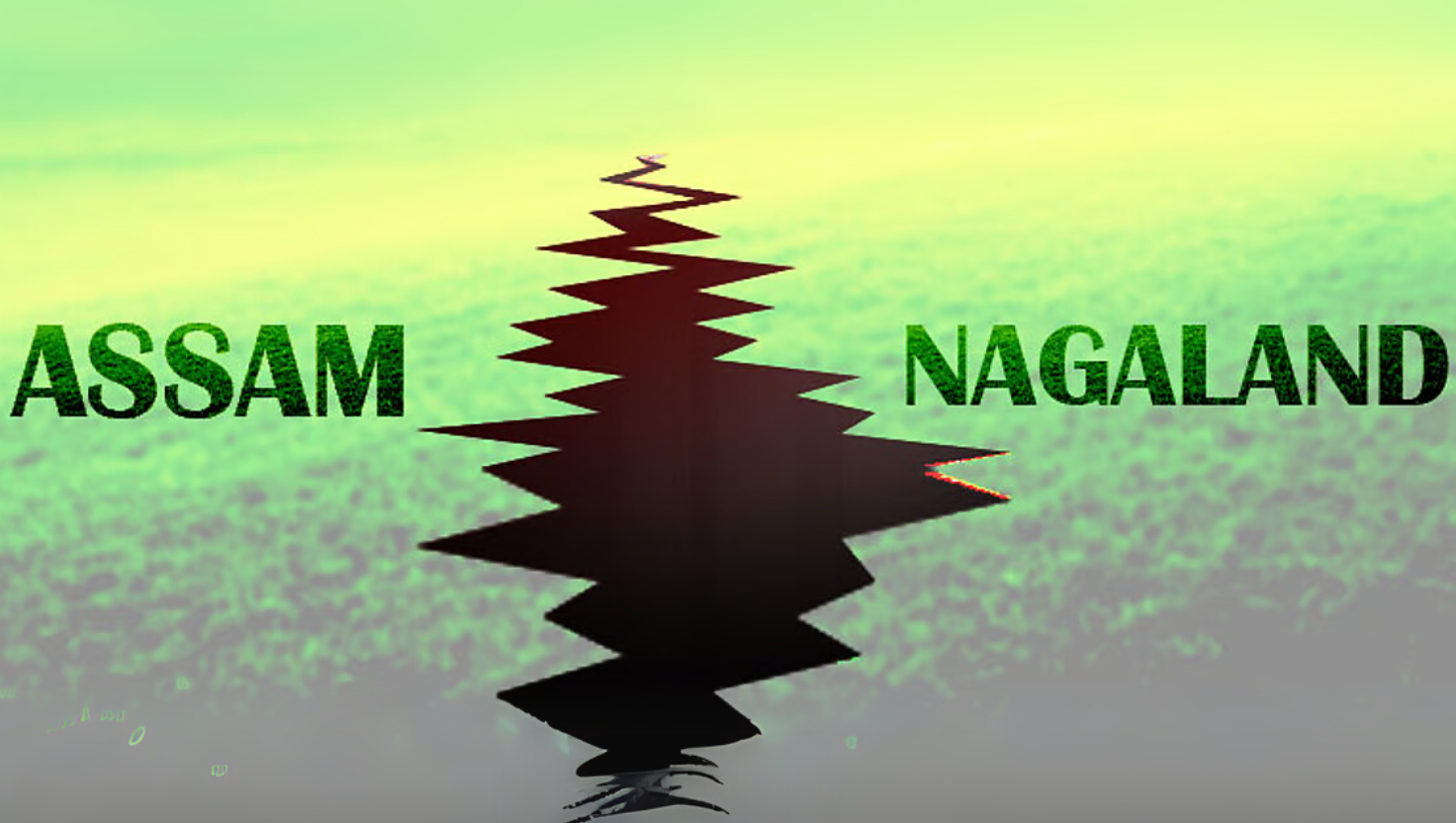Coastal Ecosystems and Mangrove Restoration
Syllabus: Environment (UPSC GS III)
Source: The Hindu
Context
India has launched large-scale mangrove restoration projects across Tamil Nadu, Gujarat, and Mumbai. These initiatives aim to strengthen coastal protection, boost biodiversity, and improve climate resilience.
Understanding Mangroves
What Are Mangroves?
Mangroves are salt-tolerant trees and shrubs that grow in coastal intertidal zones of tropical and subtropical regions. They thrive in saline, waterlogged conditions and serve as critical buffers between land and sea.
Mangroves in India
India has around 4,900 sq. km of mangrove cover, mainly found in the Sundarbans, Godavari and Mahanadi deltas, Pichavaram (Tamil Nadu), and the Gulf of Kutch (Gujarat).
Key Ecological Features of Mangroves
- Salt Tolerance: Mangroves excrete salt through leaf glands or by shedding salt-loaded leaves.
- Aerial Roots (Pneumatophores): These roots grow upward to absorb oxygen in low-oxygen, waterlogged soils.
- Prop & Stilt Roots: They provide strong anchorage in soft, unstable coastal mud.
- Vivipary: Seeds germinate while still attached to the parent tree and are dispersed by tides.
- Coastal Shield: Mangroves reduce the impact of cyclones, storm surges, and prevent shoreline erosion.
- Biodiversity Habitat: They support fish nurseries, migratory birds, reptiles, and crustaceans, making them critical for coastal ecology and livelihoods.
Importance of Mangroves
- Natural Disaster Buffer: Serve as frontline defense against floods, cyclones, and tsunamis by reducing wave and wind energy
- Carbon Sink: Store significant amounts of “blue carbon” in roots and soil, contributing to climate change mitigation
- Livelihood Support: Sustain fishing communities, crab catchers, and honey gatherers
- Tourism and Education: Help promote eco-tourism and awareness through biodiversity parks and nature trails
Threats to Mangrove Ecosystems
- Urban Expansion: Coastal infrastructure like ports, highways, and real estate projects often clear mangrove zones
- Pollution: Dumping of plastic and untreated sewage by rivers damages soil and marine life
- Aquaculture Activities: Shrimp farming has led to the destruction of mangroves, especially in Tamil Nadu and Andhra Pradesh
- Climate Change: Sea-level rise, changing rainfall, and salinity shifts harm fragile mangrove habitats
- Invasive Species: Plants like Prosopis juliflora outcompete native mangrove species, altering local ecology
Restoration Efforts in India
- Tamil Nadu – Green Tamil Nadu Mission: Mangrove area increased from 4,500 to 9,000 hectares (2021–24) through rechanneling canals and planting native species
- Muthupettai Estuary (MSSRF): 115 hectares restored using 4.3 lakh Avicennia seeds, with participation from local communities and forest departments
- Mumbai – Thane Creek Project: ₹10.3 crore initiative to plant 3.75 lakh saplings and intercept 150 tonnes of plastic waste over 3 years
- Women-Led Participation: Restoration work offers livelihoods by employing local women for seedling care and plantation activities
- Gujarat – MISHTI Programme: Under the Mangrove Initiative for Shoreline Habitats and Tangible Incomes (MISHTI), over 19,000 hectares restored, exceeding targets
Strategic Role in Coastal Protection
- Disaster Mitigation: During events like the 2004 tsunami and recent cyclones, mangroves absorbed significant impact, reducing damage
- Biodiversity Hotspots: They provide breeding and nesting habitats for species like flamingos, mudskippers, and mangrove herons
- Carbon Sequestration: Capture and store CO₂ more efficiently than many tropical forests, helping India meet its NDC targets under the Paris Agreement
- Cultural and Economic Value: Eco-tourism and heritage education are growing around restored mangrove sites, linking environment and economy
Way Forward
- Policy Integration: Align MISHTI with Smart Cities and Coastal Regulation Zone (CRZ) policies to safeguard mangroves from construction-related threats
- Community-Based Management: Engage local communities in mapping, seed collection, planting, and maintenance to ensure long-term success
- Tech-Driven Monitoring: Use drones, satellite imaging, and AI tools to monitor mangrove health and assess restoration outcomes
- Nature-Based Urban Planning: Include mangrove buffers in urban flood and climate resilience strategies
- Global Collaboration: Partner with tropical countries for joint research, knowledge sharing, and blue carbon financing
Conclusion
Mangroves serve as a natural line of defense for coastal India, blending ecological functions with economic and social benefits. Their restoration is not just an environmental task but a strategic necessity for sustainable coastal development. Strengthening science-led, community-driven conservation models will be essential for safeguarding India’s coasts and climate future.











